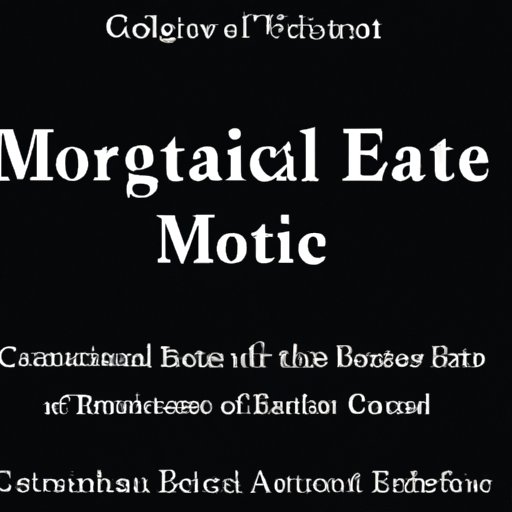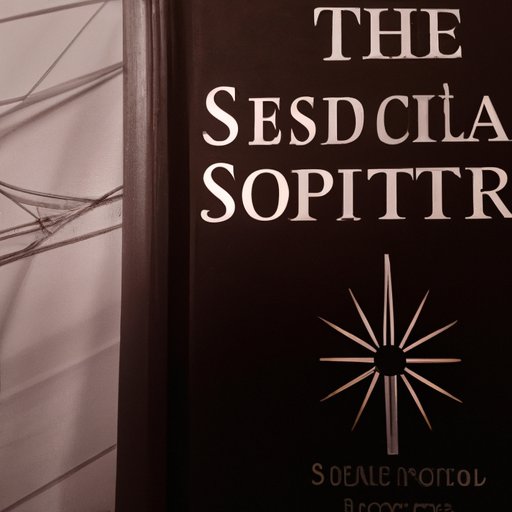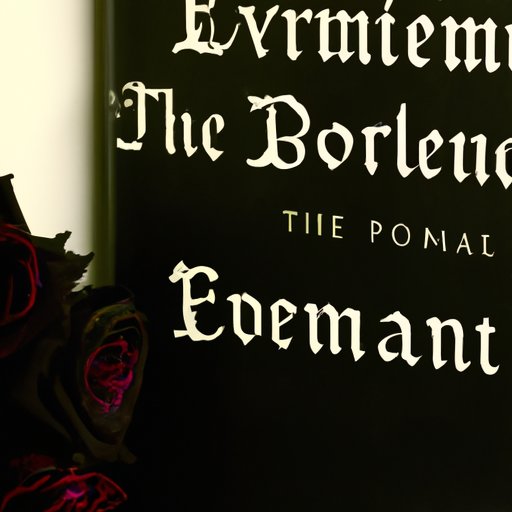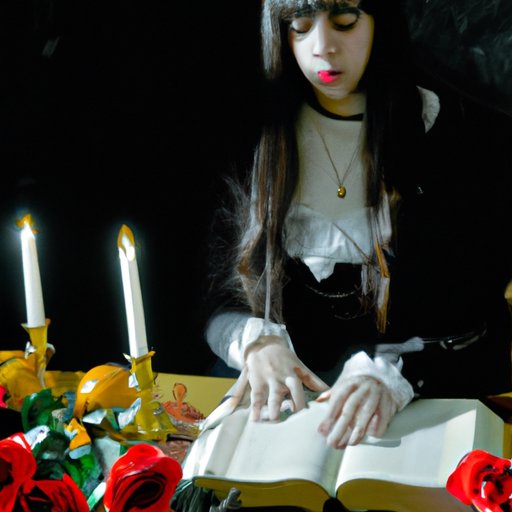Introduction
Gothic literature is a genre that has been around for centuries, captivating readers with its tales of fear, mystery, and suspense. But what does gothic mean in literature? In this comprehensive guide, we will explore the definition and history of gothic literature, its key elements, use of the supernatural, emotional power, and how it reflects and challenges society. We will also examine the genre’s popular subgenre of gothic romance.

A Historical Overview of the Gothic in Literature
The term “gothic” was first used to describe a type of literature in the late 18th century. It was popularized by the British writer Horace Walpole, who wrote the novel “The Castle of Otranto” in 1764. This work is considered to be the first true gothic novel, and it set the tone for the genre for years to come.
In the early 19th century, the gothic genre experienced a resurgence, thanks in part to the works of authors like Mary Shelley and Edgar Allan Poe. These writers explored darker themes, such as death, madness, and the supernatural, which would become staples of the genre. They also helped to popularize the concept of the anti-hero, which would become a defining feature of gothic literature.
In the 20th century, authors such as Bram Stoker and H.P. Lovecraft continued to expand the boundaries of the genre. Their works pushed the limits of horror, blending elements of fantasy and science fiction to create stories that were both terrifying and thrilling. The genre has seen a resurgence in recent years, with authors such as Stephen King and Neil Gaiman exploring the darker side of the human condition.
Gothic Elements and their Impact on Literature
Gothic literature is known for its use of setting and atmosphere to create a sense of dread and foreboding. Writers often employ detailed descriptions of dark and mysterious locations, such as crumbling castles or abandoned mansions, to set the scene for their stories. They also make extensive use of imagery to evoke a feeling of terror and unease in the reader.
Characterization is also a key element of gothic literature. Characters are often exaggerated or over-the-top, and they often embody extreme emotions such as love, hate, and fear. The protagonists of these stories are often outsiders, struggling to find their place in a world that is hostile to them.
Themes of death, guilt, and redemption are also common in gothic literature. Stories often explore the consequences of sin and the power of the supernatural to bring about transformation. The idea of the “monstrous” is also explored, with characters often being pitted against creatures from beyond the grave.

The Role of the Supernatural in Gothic Literature
The supernatural is a major element of gothic literature, and it is often used to create fear and suspense. Ghosts, monsters, and other mysterious forces are commonly employed to haunt and torment characters. Even though these forces may be frightening, they can also be a source of comfort, providing a way for characters to confront their fears and gain insight into themselves.
The uncanny is another important element of gothic literature. This refers to a feeling of unease created when something appears to be familiar but is actually strange or unfamiliar. This can be seen in the use of doubles or doppelgangers, which often appear in gothic stories to confuse and disorient the protagonist.
Exploring the Power of Emotion in Gothic Literature
Gothic literature has the power to elicit strong emotions in its readers. Fear and anxiety are common themes, and writers often use disturbing imagery and disturbing plot twists to create feelings of terror and dread. Love and loss are also explored, with stories often focusing on the tragic consequences of forbidden passions.
Themes of loneliness and isolation are also common in gothic literature. Characters often feel disconnected from society, and this can lead to feelings of despair and alienation. The stories often explore how characters cope with these emotions and find strength in unlikely sources.
Gothic Narratives: How they Reflect and Challenge Society
Gothic literature has long been used as a way to reflect and challenge society. Authors often use the genre to comment on contemporary issues, such as class divisions and the dangers of superstition. These stories can also be subversive, offering critiques of established beliefs and conventions.
Gothic narratives can also be empowering. By exploring themes of fear and vulnerability, they offer readers a glimpse into the darker side of life. By confronting the unknown, characters can discover hidden strengths and overcome obstacles that seem insurmountable.

An Examination of the Subgenre of Gothic Romance
Gothic romance is a popular subgenre of gothic literature. These stories typically focus on forbidden love between two characters, often of different social classes. The protagonists often face danger and adversity as they struggle to find happiness and acceptance. Key elements of this subgenre include archetypal characters, such as the brooding hero, the innocent heroine, and the sinister villain.
Gothic romance has been popular throughout the centuries, and it continues to be a favorite among readers. These stories provide an escape from reality, allowing readers to explore the depths of human emotion and experience a thrilling adventure.
Conclusion
In conclusion, gothic literature is a genre that has captivated readers for centuries. It is defined by its use of setting, atmosphere, characterization, and themes to create a sense of fear and dread. It also makes use of the supernatural and explores powerful emotions such as fear, love, and loss. Finally, it offers a reflection on society and a critique of established beliefs and conventions. The popular subgenre of gothic romance adds a layer of forbidden love and adventure to the mix, making it a timeless genre that continues to draw readers in.
(Note: Is this article not meeting your expectations? Do you have knowledge or insights to share? Unlock new opportunities and expand your reach by joining our authors team. Click Registration to join us and share your expertise with our readers.)
